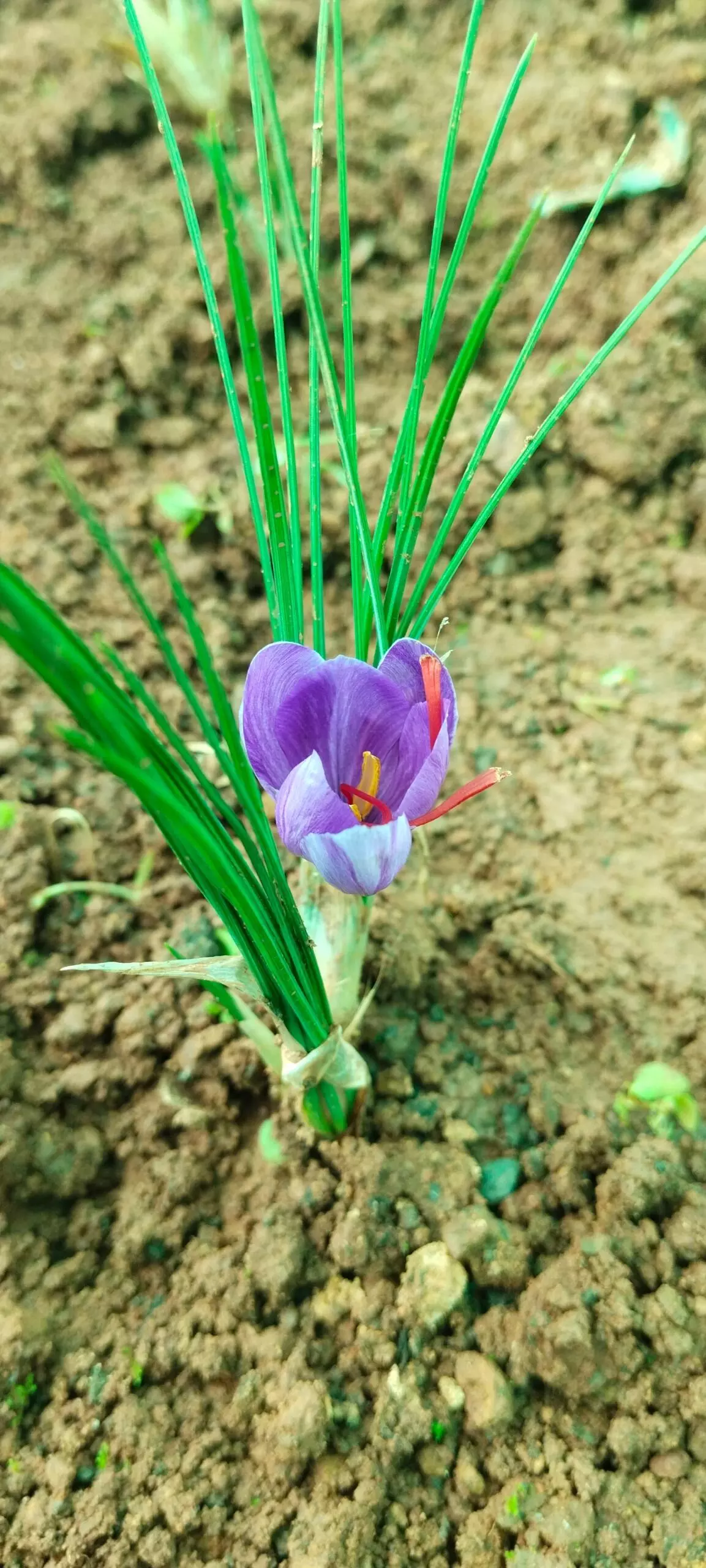Forget Kashmir, Andhra’s Chintapalle successfully cultivates saffron in closed environment
The scientists at RARS Chintapalle took it as a challenge to cultivate the world’s costliest spice
By Newsmeter Network
Visakhapatnam: Scientists at the Regional Agricultural Research Station (RARS), Chintapalle in the Alluri Sitharama Raju (ASR) district have achieved a breakthrough by cultivating saffron in glasshouses and shaded net conditions.
Scientists said the climate in Chintapalle (cool conditions for many months) and a few other parts of the ASR district is apt for saffron cultivation.
It may be recalled that after a year of hard work and an investment of Rs 10 lakh, P Srinidhi Reddy has been able to cultivate saffron in a closed-room environment at Madnapalle in Annamayya district. Srinidhi has completed her post-graduation in Soil and Water Conservation from Banaras University in Uttar Pradesh.
A few months ago, Srinidha visited the Chintapalle region in the ASR district and observed that the climate conditions (cool weather for many months) in the tribal pockets of the ASR district are suitable for the saffron crop.
Keeping in mind the demand for saffron that is grown only in Jammu and Kashmir, the scientists at RARS Chintapalle took it as a challenge to cultivate the world’s costliest spice.
Dr. M Suresh Kumar, ADR, RARS Chintapalle, BN Sandeep Naik, Agronomy Scientist, and Dr. Vamshi Krishna Suddala, Research Associate in Horticulture, a structured plan was devised for the saffron crop. They framed a schedule to start the saffron cultivation in August, September, and October in three different conditions-- shade net, glass house (pots), and open field at a spacing of 15X10 cm with a total of 200 kg of corms.
As per schedule, 6,500 corms were sown in August, September, and October. In these three conditions high percentage of germination was seen in the case of glass houses followed by shade nets and poor germination in open fields.
"We have harvested a few grams of saffron and will send it for a quality test. We have been chalking out plans to expand the crop to various parts of the district by distributing the corms to tribal farmers. The saffron may change the lifestyle of the farmers in the coming years, said Dr M Suresh Kumar, ADR, RARS Chintapalle. We have to wait for some more months to establish the yield and quality of the saffron," he added.